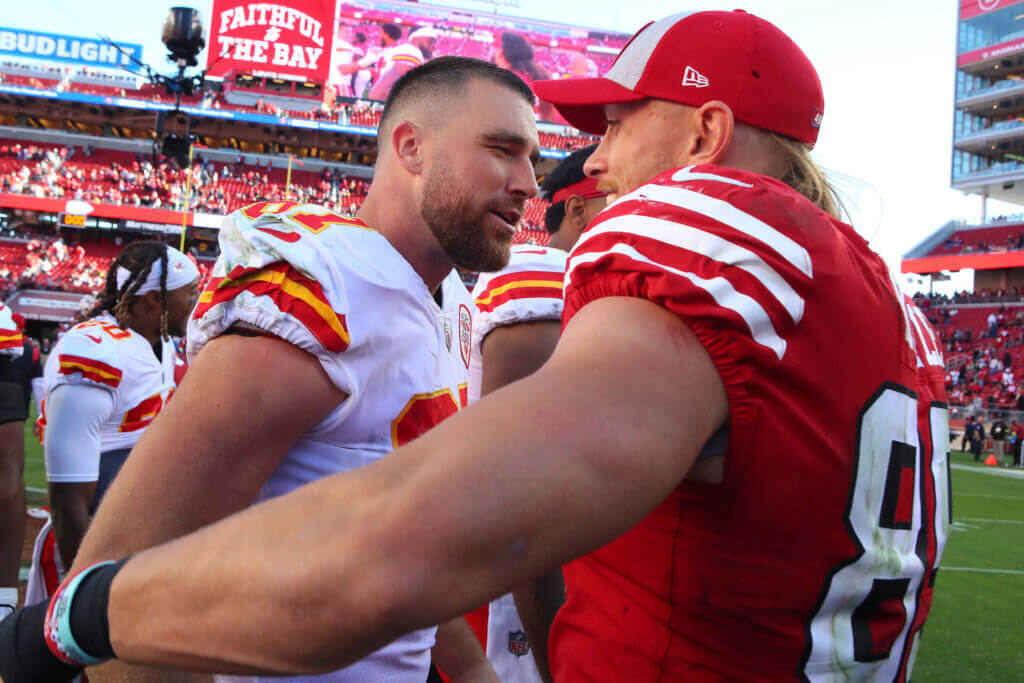CELEBRITY
Where do Travis Kelce and George Kittle fit in among the great NFL tight ends?

This Super Bowl showdown between Travis Kelce of the Chiefs and George Kittle of the 49ers is a clash of styles.
It’s Kelce’s tight fade versus Kittle’s straggly, anyone-know-a-good-barber? look.
Kittle’s pregame routine includes meditation, visualization and a salt bath. Kelce spends three hours selecting what he will wear.
Kelce pulls up in a Rolls-Royce Ghost, whereas it’s a classic Mustang for Kittle.
They are as different as Heath Ledger (Kittle has a tattoo of him) and Chris Farley (Kelce watches his movies repeatedly
Kelce is a Burger King Whopper kind of guy; Kittle goes for the orange chicken at Panda Express.
And there’s more.
The opposing tight ends come from different branches of the same tree.
Kelce, with his confounding feel for understanding football’s intersections of time and space, is the representative of the receiving branch.
Appropriately, Kittle is the son of a one-time left tackle and offensive line coach. That is not to say he catches as if he’s wearing boxing gloves, however. He once had 210 receiving yards in a game. Kittle led NFL tight ends in receiving yards this season — it was his third 1,000-yard season.
In 2018, he had 1,377 yards, which was the most by a tight end in NFL history. Two years later, Kelce outdid him by 39 yards. Since Kittle came into the league in 2017, Kelce is the only tight end with more receiving yards.
Kelce has seven 1,000-yard receiving seasons — more than any tight end ever (he missed his eighth this season by 16 yards after sitting out the regular-season finale). In his career, he has averaged 71.2 receiving yards per game — highest among all tight ends.
Football’s first tight end was supposed to be a linebacker.
At least that’s what many teams thought. But Bears coach George Halas, head scout George Allen and assistant coach Luke Johnsos saw something in Mike Ditka that no one else did. They selected him and invented a new position, moving him a few yards from the offensive tackle on the line of scrimmage so he could have a two-way release, inside or outside the pressing defender .
.






